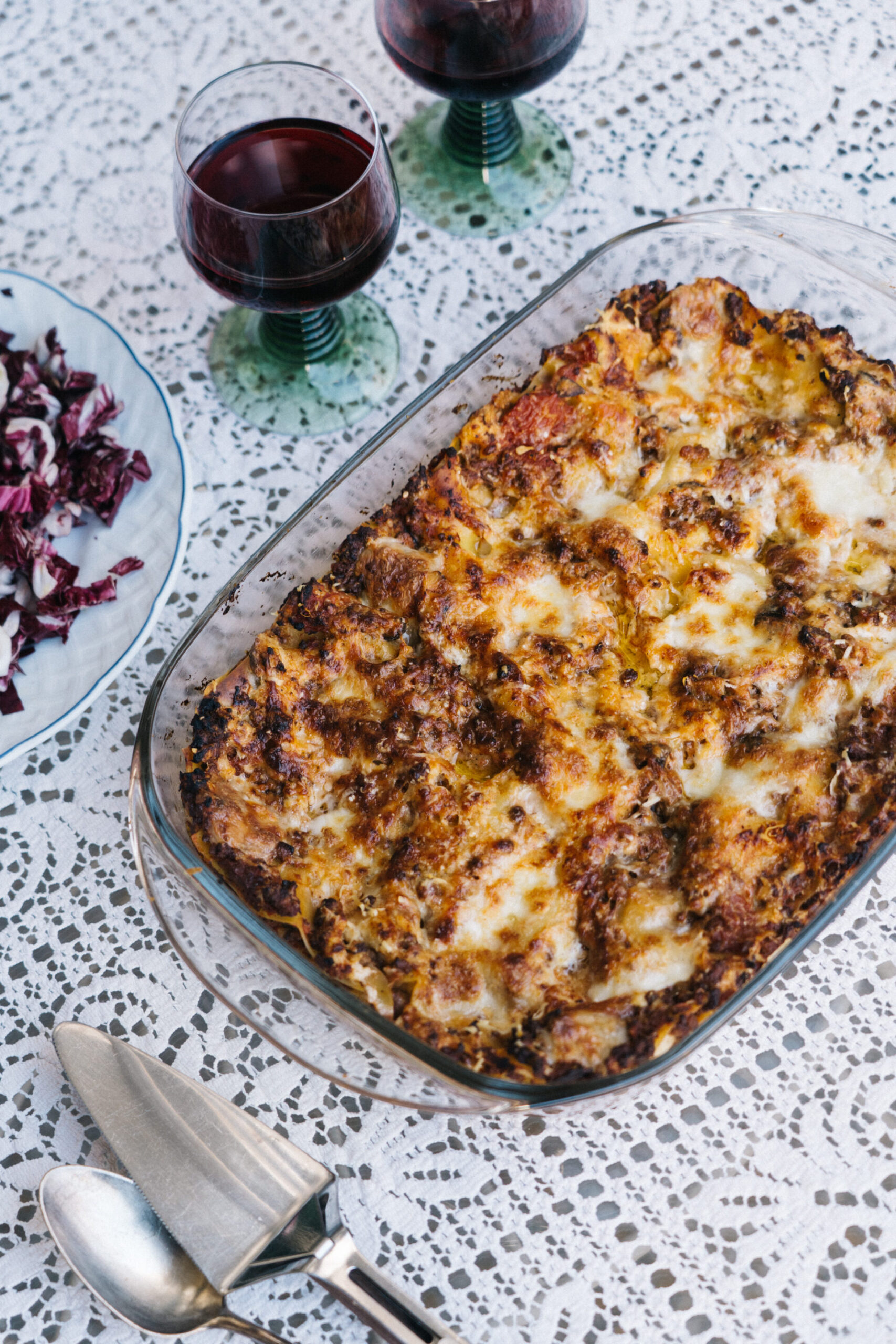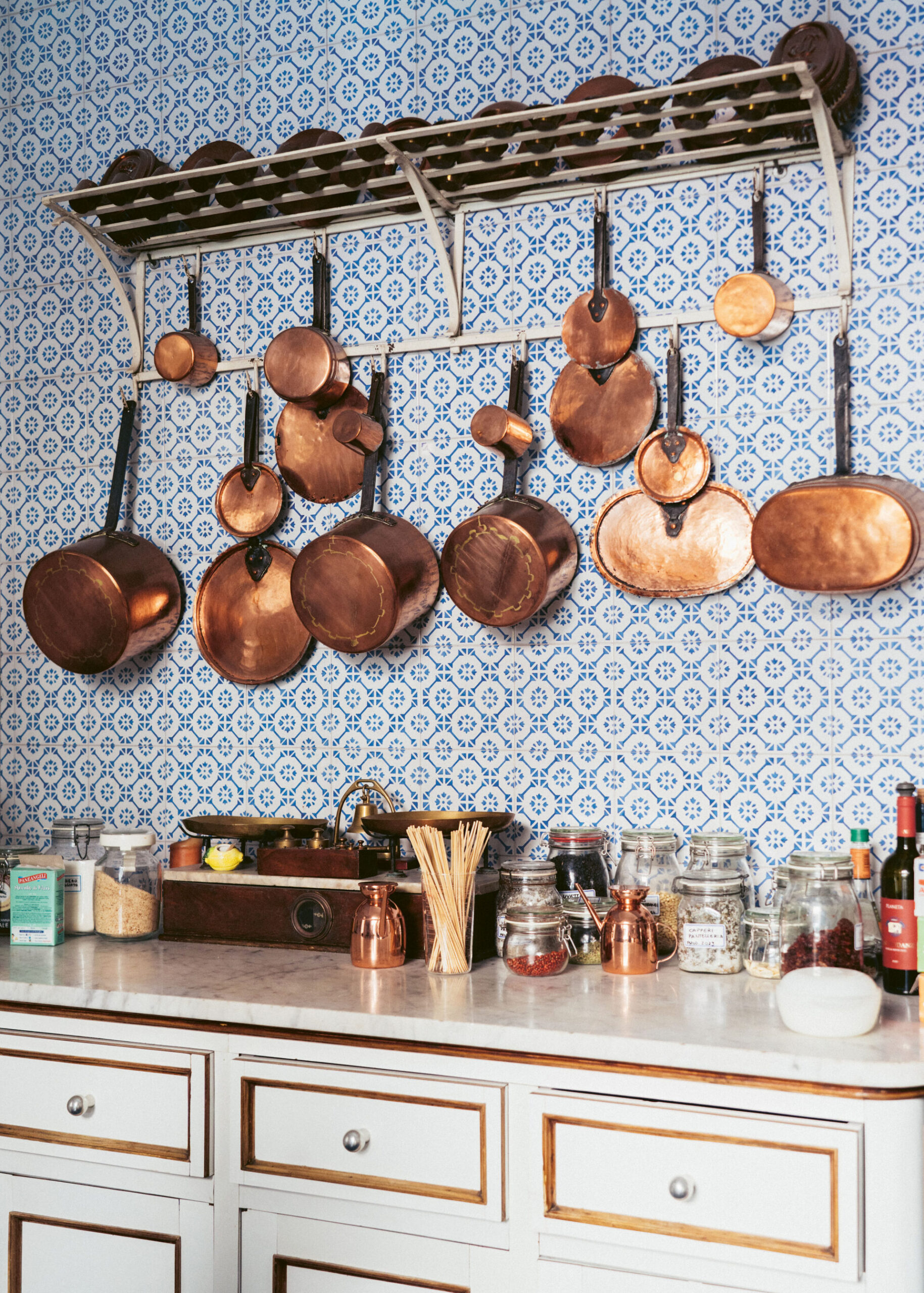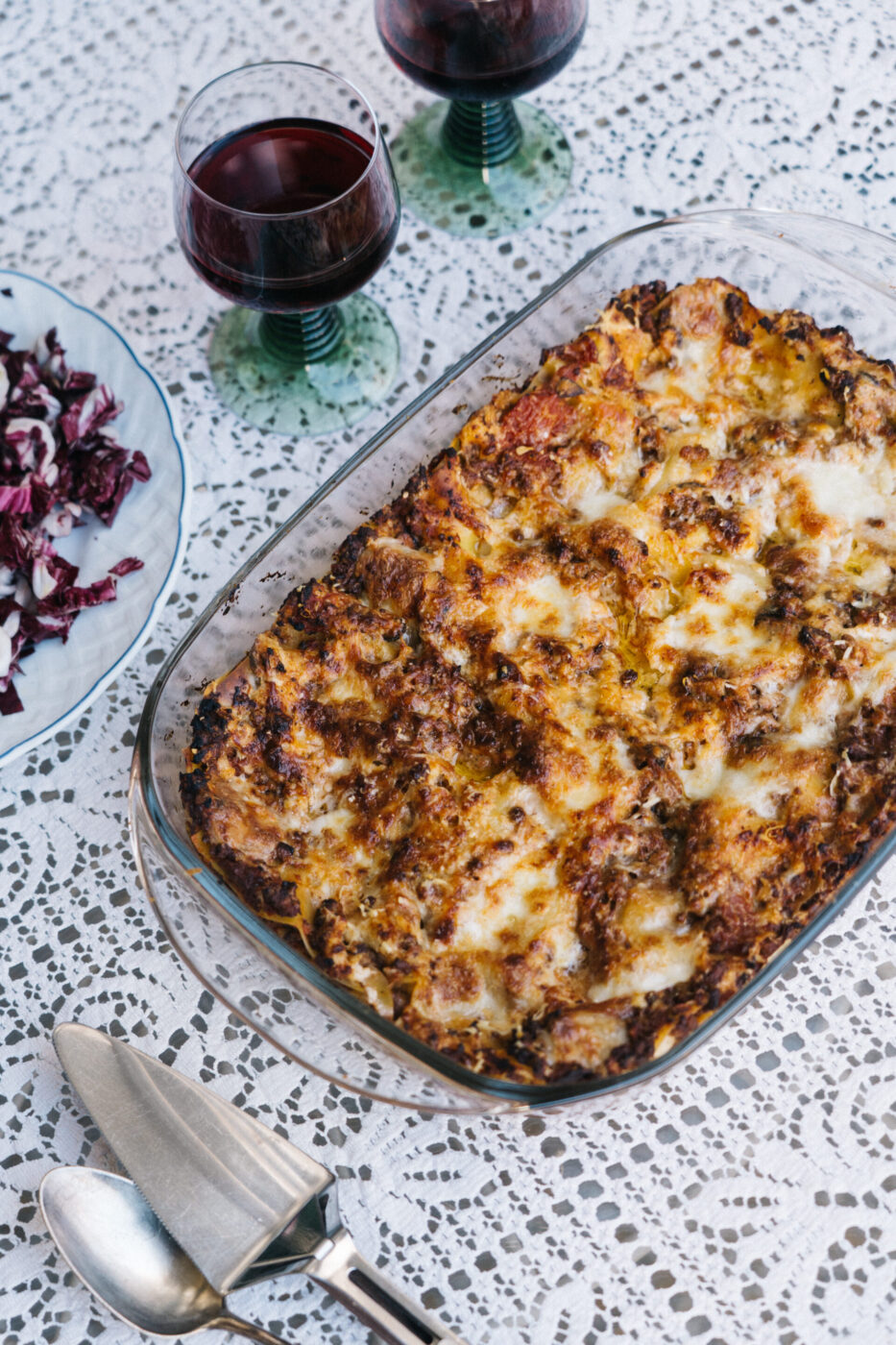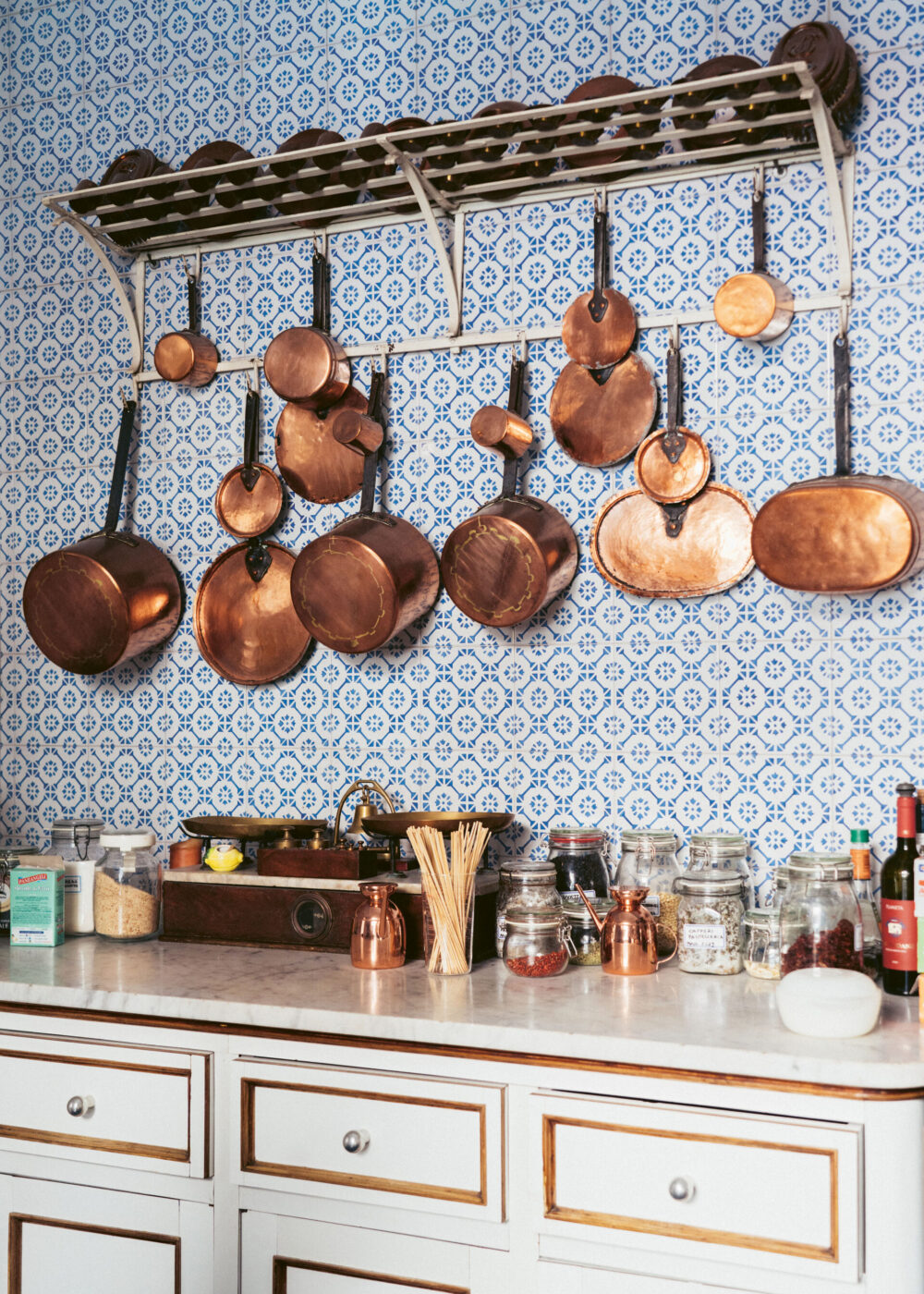Editor’s Note: This recipe comes from Mediterranea by Anastasia Miari (Quadrille, £28; photography © Marco Argüello), which includes recipes by and stories of nonne from all over the Mediterranean. The key to a lasagna alla nonna is making enough to serve every child, grandchild, friend… and hungry passerby.
Yes, it’s an obvious one, but I couldn’t write a book about Mediterranean grandmothers’ cuisine without including this Italian nonna staple. Not only is it one of the first dishes a grandmother (that wasn’t my own!) shared with me, it’s comforting, familial, and a recipe I want to pass on to my own daughter, who is half Italian.

Photo from Mediterranea by Anastasia Miari (Quadrille, £28; photography © Marco Argüello)
I’ve been sitting on this recipe for almost six years now, ever since my brief escape to Sicily and a short-lived love affair in Palermo. The best thing to come out of that six-month sojourn was the mother of all lasagne recipes, gifted to me by Nonna Franca, who runs an agriturismo at the heart of the island. Within days of meeting the tall, dark handsome man who will not be named, he’d whipped me off to Nonna Franca’s, leaving me to follow her around the kitchen while he took part in the annual olive harvest.
Due to the last-minute nature of our trip and the fact I was there for pleasure and not business, I didn’t photograph the brilliant Franca or her perfect lasagne. What I did take away was a recipe for the most exquisite lasagne I’ve ever tasted in my life. Being a carb aficionado, of course I have made, tried, and tested other lasagnes, but this one tops them all. I still remember with great pleasure the way Franca artfully drizzled her light béchamel between all the pasta layers, dashing white against bright red sugo splatters—a stunning Jackson Pollock of a dish.
Serves 6-8
INGREDIENTS
- 750 g (1 lb 10 oz) passata (sieved tomatoes), preferably infused with basil
- 140 g (5 oz) tomato purée (paste)
- 300 ml (10 fl oz or 1 1/4 cups) water
- 4 basil leaves (if the passata doesn’t contain basil)
- 1 bay leaf
- 50 ml (1 3/4 fl oz or 3 1/2 tablespoons) extra virgin olive oil
- 2 large white onions, finely diced
- 500 g (1 lb 2 oz) minced (ground) beef
- 1 teaspoon salt
- 1/2 tsp freshly ground black pepper
- 16–18 lasagne sheets (about 350 g or 12 oz)
- 40 g (1 1/2 oz) parmesan, grated
- 1 ball of mozzarella, sliced
- 50 g (1 3/4 oz) unsalted butter, cubed, plus extra for greasing
FOR THE BÉCHAMEL
- 1 liter (34 fl oz or 4 1/4 cups) milk
- 70 g (2 1 or 2 oz) unsalted butter
- 70 g (2 1/2 oz or generous 1/2 cup) cornflour (cornstarch)
- 1 teaspoon salt
- 1/2 teaspoon freshly ground black pepper
PREPARATION
- In a wide saucepan, combine the passata, tomato purée, and water along with the bay leaf and the basil, if using, and bring to the boil before reducing to a simmer and cooking for 25 minutes until the sauce reduces and thickens.
- Meanwhile, heat the oil in a frying pan and fry the onions for a couple of minutes until translucent, then tip in the meat and brown for up to 5 minutes. Once the meat has taken on a little color, add this mixture to the sauce along with the salt and pepper, stirring to combine. Remove from the heat while you prepare the béchamel.
- Preheat the oven to 180°C fan (400°F).
- Pour the milk into a saucepan over a medium heat and bring almost to the boil, taking care not to burn it, then transfer it to a jug (pitcher) and rinse the saucepan clean.
- In the same pan, gently melt the butter over a low-medium heat. Add the cornflour and stir rapidly until it forms a paste and takes on a light biscuit tone. Now gradually pour in the milk, whisking quickly the entire time to ensure no lumps appear. Keep whisking until the béchamel thickens, then add the salt and pepper.
- Grease a large baking dish with butter, then use a ladle to drizzle a quarter of the béchamel over the bottom of the dish. Now add a quarter of the meat sauce—you can overlap with splodges of red sauce on white béchamel or go checkerboard style and drip the sauce in the empty spaces where there is no béchamel. Use a spatula to spread out the sauce and béchamel layer to the edges of the dish. After this, add a layer of lasagne sheets. You can fill in any gaps with broken lasagne sheets. Repeat the same process with another quarter of the béchamel and sauce, topping with a sprinkling of parmesan and a third of the mozzarella. Add another layer of lasagne sheets, then repeat the process again until all the sauce and béchamel has been used up. In the end, you should have four layers of béchamel and sauce with three layers of lasagne sheets in between them. The final layer should be topped with the rest of the cheese and the cubed butter, scattered evenly across the top.
- Bake in the oven for 20 minutes or until golden brown and bubbling on top.


